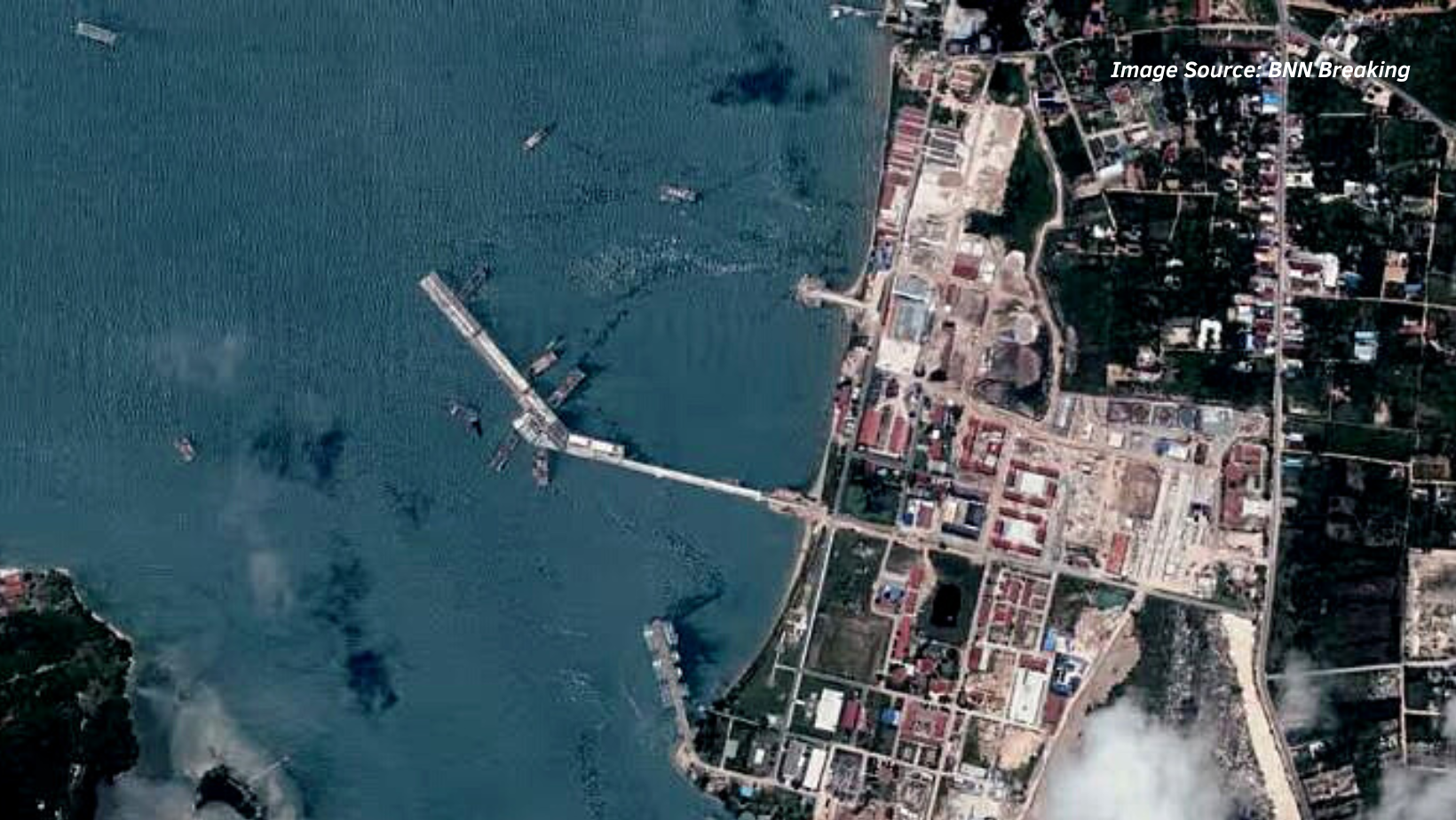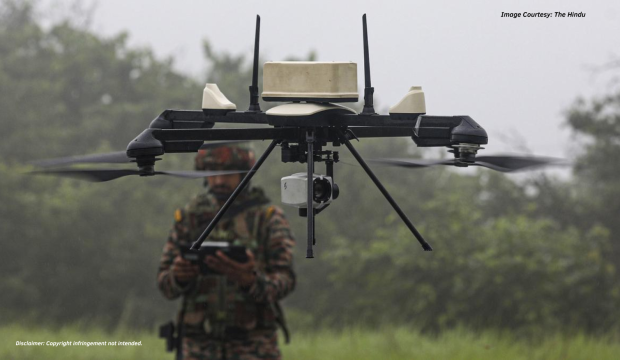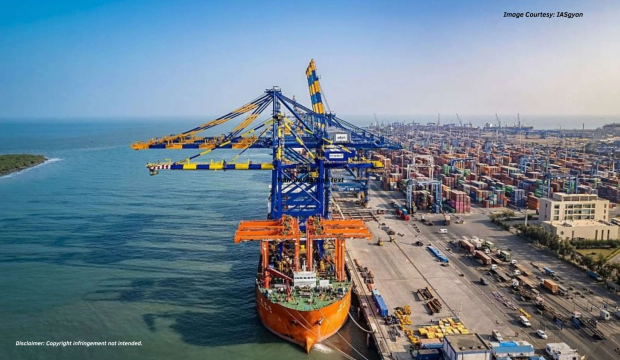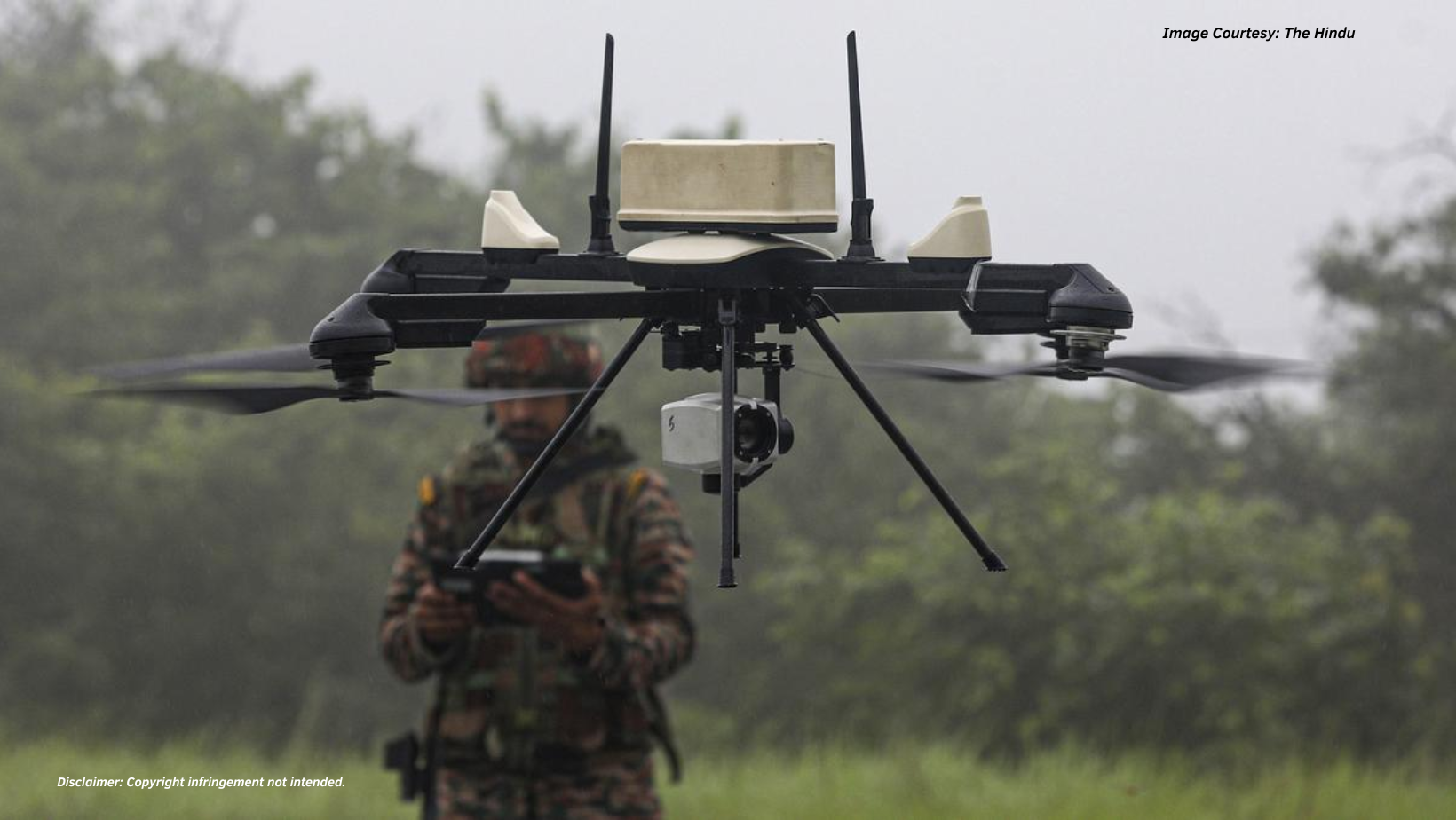Abstract
The term blue-water navy does not constitute any set of qualifications for the title, but it sure does require instruments for spanning sea control in the deep waters. A lot of parameters like logistics, fleet submarines, and air power projection come in handy when determining the sea control capabilities of a navy. As of now, only the US has a true-blue water navy, as its fleets have successfully spanned across the deep waters of the open oceans. China’s blue-water navy ambitions are clear, as the People’s Liberation Army Navy (PLAN) has repeatedly gone overboard with increasing its fleet ships. China now has the highest number of fleet ships; on the contrary, China’s technological advancements do not yet match those of the US Navy.
Introduction
A Blue-water navy is essentially a naval force capable of transcending global sea control. Functioning far away from its home ports, the fleet of a blue water navy constitutes aircraft carriers, submarines, large surface ships like destroyers, frigates, cruisers, and replenishment ships. A blue water fleet helps a country to project power in the open seas therewith establishing themselves as a global maritime power, for example, the United States. In today’s geopolitically turbulent times, it is critical to understand the importance of securing sea lines of communication (SLOCs) and strategic chokepoints in order to protect the economic as well as strategic interests of a country. This is where a strong navy comes into play, and a blue water navy is the icing on the cake, by creating a formidable presence in various regions. A blue water navy can potentially deter adversaries as it ensures overseas naval ports, which in turn are effective in reducing the response time in case of any crisis or conflict related to the maritime trade.
This article will assess People’s Liberation Army Navy (PLAN’s) ability to operate globally in the open ocean by scrutinising its technical as well as diplomatic apparatus as it confronts regional and global maritime orders. The brief will further analyse the implications of China’s growing naval prowess for India and how it threatens the idea of a free and open Indo-Pacific.
Background
The Chinese leadership was constantly fearful of a ground invasion by the Soviet forces due to Sino-Soviet border conflicts followed by Sino-Soviet split. Therefore, China’s naval strategy for most of the 20th century focused on the coastal defence, primarily entrusted with supporting the ground forces. The Coastal Defence underwent two major phases: before the mid-1980s, the focus was on “near coast defence,” so as to quickly support the ground forces in case of any escalation. After the mid-1980s, as the threat of war decreased, the focus shifted to “near-seas active defence.” The eminent Commander-in-Chief of PLAN, Admiral Liu Huaqing (1982-88) presented an “offshore defence strategy” aiming to bolster China’s “near seas active defence”; by then, the Chinese leadership had recognised the importance of securing sea lines of communication. The offshore strategy was to be implemented in three stages. :
- Phase I – PLAN needed to exert control over the marine territory of the first island chain[i] (Japan, Taiwan, Indonesia, and the Philippines) by 2000.
- Phase II – The navy was projected to extend its control over the marine territory of the second island chain (Bonin Islands, Volcano Islands, Mariana Islands, western Caroline Islands, and western New Guinea) by 2020.
- Phase III – By 2050, PLAN was expected to bloom into a true-blue water navy.
The offshore defence strategy is a conceptual framework which is not widely endorsed by the Chinese leadership connoting that there is no official doctrine regarding the same. However, China’s “Defence White Paper 2019” mentioned that PLA is speeding up its transition to “Far-Seas Protection”, thus adding a new component to China’s naval strategy. China’s growing maritime interests are directly proportionate to China’s growing national interests, such as, securing strategic SLOCs to further secure its trade routes, growing China’s international stature thereby challenging the US led world order, and ensure the security of China’s foreign investments.
South China Sea – A Stepping Stone For China’s Blue Water Ambitions
Does China qualify as a blue water navy? Not as of now, but China’s rapid economic growth and acquisition of maritime assets have demonstrated China’s growing naval prowess, which consequently raised eyebrows around the world and paved the way for the “China Threat Theory.” It refers to speculations around the world fuelled by China’s expansionist behaviour capable of disrupting the world order in the near future. Although China has been painstakingly clear with its “Peaceful Development Policy,” which is nothing more than a political slogan set in motion by Chinese think tanks to assure the international community that China’s rise is not a threat to global security, but the West labelled it as a mere façade and propaganda.
China’s expansionist behaviour is evident in how they have seized control of the first island chain’s maritime territory through self-constructed frameworks such as the “Nine Dash Line”. Since 2013, China has begun constructing artificial islands on disputed reefs in the South China Sea (SCS) to improve its offshore defensive capabilities. The artificial island construction has not only harmed the coral reefs and the marine life that depends on them but also antagonised its SCS neighbours (the Philippines, Vietnam, Taiwan, Malaysia, and Brunei) and significantly worsened regional insecurity. China has successfully built seven artificial islands in the Spratly Islands, initially claiming that they would be used for non-military purposes, but gradually equipping three of the seven islands with radar systems, airstrips, aircraft hangars, and missile arsenals has led to the conclusion that they have been converted into military facilities.
To further gain sovereignty over Nine Dash waters, China’s effective Intelligence, Surveillance, and Reconnaissance (ISR) system helped significantly, and China is determined to improve its existing system by not only increasing its ISR collection assets in the South China Sea but also upgrading its existing technologies, for instance, to further increase its influence in the Second Island Chain, China is deploying nuclear-powered ballistic missile submarines (Jin class ) in the South China Sea. However, the US is challenging China in the South China Sea through its freedom of navigation operations (FONOPS). To counter China’s hegemony in the South China Sea and to reassure the US’ commitment towards this region, the US holds these naval exercises but the US FONOPS are largely considered unnecessary by the Southeast Asian states as they are not only violations of international law but also a cover for its intelligence probes, China sees these exercises as a provocation and violation of China’s sovereignty . It would not be incorrect to postulate that China has a firepower advantage in the South China Sea over any other naval force, and in retaliation, China has gone overboard in trying to create this region as a naval bastion, threatening the US presence in the Second Island chain. The unmanned ocean network in the northern South China sea consisting of a network of sensors and communication capabilities on both fixed and floating platforms between Hainan and Parcel Islands was a trial initiative by China between 2016 and 2019 in order to increase its control over the South China sea. But China is looking to expand this network to the Indian and Pacific Oceans; hence, it is called the Blue Ocean Information network.
Assessing China’s Technical Naval Prowess
What is China’s current technical Naval prowess? China has a total of three aircraft carriers, namely, Liaoning (type 001), Shandong (type 002), and Fujian (type 003). China’s new carrier, the Fujian, which was launched in 2022, is designed to be a blue-water carrier. Fujian is featured with CATOBAR (catapult assisted take-off but arrested recovery) and electromagnetic catapults, which can be exclusively found aboard only US and French carriers, like the United States’ ten Nimitz-class carriers and the Gerald R. Ford aircraft carrier, and France’s Charles de Gaulle-class carrier. Fujian also comes with an integrated power system and electronic warfare systems, but what is interesting to note is that it is still undergoing trials and may take two to three more years before setting out on operations, whereas even Liaoning and Shandong lack operational experience. These carriers do not match the capabilities and effectiveness of other global maritime powers like the US whose aircraft carriers have been involved in real time operations such as Operation Enduring Freedom in 2001 and Operation Iraqi Freedom in 2003.
Aside from aircraft carriers, an important component of a blue naval fleet are nuclear-powered submarines. Simply put, deploying diesel-electric submarines is not a smart choice when there is a shortage of naval bases or friendly ports due to their constant need for refuelling and lesser logistical base, whereas a nuclear-powered submarine is imperative for a blue water fleet because it can remain submerged for months, is stealthier, and can assist the whole fleet with ISR. As for China, they have six nuclear-powered submarines, the 091 and 093 type classes, which are capable of launching anti-ship and land-attack cruise missiles. In comparison to the US’ Virginia-class attack submarines and US Ohio-class ballistic missiles, Chinese submarines lack endurance, range, and speed. To overcome these shortcomings, China is developing a new generation of Type 095 and Type 096 with improved endurance and stealth. China has also successfully deployed an intermediate-range ballistic missile, the Dongfeng-26 (DF-26) also known as the Guam Killer, capable of hitting Guam (the largest US navy base) which is located at a distance of 4000 Km. China’s potent A2AD system poses a threat to the US and its allies since it consists of anti-ship ballistic missiles such as the DF-21D, which is capable of launching anti-satellite missions, stealth fighters, and cyberwarfare.
As for the Chinese surface combatants, they include destroyers, corvettes, frigates, and amphibious assault ships, but not all of them are prepared for the open oceans. Types 055 and 052D destroyers and type 054A frigates are a formidable forces for PLAN, they are ready for blue-water operations as they are well equipped with long-range and high-speed capabilities, therefore they can form a bulk of warship escorts for the aircraft carrier . Hence, they are more suitable to function in open seas as compared to lighter ships, like type 056 corvettes or type 022 missile boats. Larger ships are better because they provide a strong logistical base, and their built can help them withstand harsh weather and sea conditions.
China’s unmanned naval capabilities are critical to PLAN’s modernisation and enhancement of China’s undersea warfare. The unmanned ocean network system is vital not only for conducting oceanographic research operations but also for performing ISR operations. Recently, China has inducted Zhu Hai Yun (first seaborne drone carrier) which is capable of carrying several unmanned surface vehicles, unmanned underwater vehicles and unmanned aerial vehicles on its deck. A robust Blue Ocean Information Network will assist China in gray zone operations, anti-ship warfare and seabed exploration. China has justified this system of information technology as a monitoring system, but it has raised speculation around the world in terms of its security implications because the system provides an additional military utility in times of crisis by providing information and filling out the gaps left by radars and sonars in the deep sea. The blue ocean information network also includes, underwater vertical sonar arrays, wave gliders, uncrewed surface vessels and unmanned aerial vehicles.
A blue-water navy’s capacity to project air power is another critical component. This is primarily an exhibit of force and capability, with the goal of deterring the adversary. While aircraft are at sea, they are used for reconnaissance and surveillance, and for protection of the convoy. If the situation with the enemy at sea deteriorates, air power can be used to suppress the opponent’s air power while also assisting with joint warfare by collaborating with other forces and serving as an additional command and control. China’s AEW&C and EW aircraft, such as the KJ-2000, KJ-500, KJ-600, Y-8G, and Y-9G, are designed to provide situational awareness, command and control, electronic warfare and intelligence support.
China In Indian Ocean Region And Its Implications For India
Currently, China’s blue water operations are largely taking place in the Indian and Pacific Oceans. According to Admiral Alfred Thayer Mahan, “whoever conquers the Indian Ocean will dominate Asia and this ocean is the key to the seven seas,” therefore making the Indian Ocean Region (IOR) a hotspot for naval power projection. For a long time now, China has been using policing for anti-piracy operations as an excuse to wander in the Indian Ocean Region. Since 2017, the presence of PLAN’s submarines, survey and hydraulic ships like Type 625C Shiyan 3 Oceanographic and Type 636A hydrographic survey ship Haiyang Class 22 in the IOR has increased. The above-mentioned Blue Ocean Information Network is being used by China to deploy fleets of underwater drones (sea wing gliders) in the IOR in order to gather naval intelligence under the disguise of research projects. This has raised concerns for India’s national security because, in times of crisis, these sea wing gliders may assist in submarine warfare due to their effective sonar performance.
Initially, China presented Djibouti as a logistical base, but China has swiftly expanded its presence in the IOR through Djibouti’s strategically important location, so much so that Chinese hydraulic and survey ships are sailing closer than ever to Indian Economic Exclusive Zones . China has installed a type 305B radar system in Djibouti capable of detecting aircraft and missiles from 300 kilometres away, indicating that Djibouti has been completely turned into a naval base. China’s new spaceport in Djibouti is yet another threat to not only India’s national security but also its diplomatic ties with Africa, as this spaceport gives an edge to China over India’s space diplomacy. Chinese cooperation with the Pakistan Navy poses a joint threat to India’s security since China has deployed a Wing Loong II-armed drone at Gwadar, which can carry missiles and bombs for strike missions. Pakistan has also acquired Chinese type 54-A frigates and eight Hangor-class submarines and is further set to acquire eight Chinese type-39 Yuan class attack submarines.
Chinese vessels have been caught running in the dark without broadcasting their positions, gathering intelligence on strategic chokepoints in the Indian Ocean like the Malacca and Lombok Straits and sometimes up close to the Bay of Bengal. China plans to establish an Indian Ocean Fleet while ensuring that it will not harm India’s interest in the IOR, which appears unlikely given the PLAN’s current movements in the Indian Ocean. Since the past 10 years, Chinese research vessels have been operating in the IOR, mapping the ocean bed in order to make incursions into the Indian Ocean, posing a threat to India and Western Nation’s submarine operations.
Conclusion
China’s expansionist behaviour is the key driver behind its pursuit of a blue-water fleet. From the above assessment, PLAN has a long way to go before it can be on par with the US Navy (USN). Although China has the largest navy by numbers, it falls short of high-end capabilities like those of the USN. China is a dominating force in the South China Sea, and this is the only region in the world where PLAN can actually challenge the USN as they have a firepower advantage in their home waters. The Chinese Blue Water Navy is not fully mature, but considering their constant growth, China may achieve this status by 2049 , which is a deadline set by President Xi for his military to become a “World-Class Force”.
China’s incursion in the Indian Ocean has, in a way, increased India’s strategic partnerships, and the world is realising India’s importance in curbing Chinese influence in the Indo-Pacific. US-India relations are at an all-time high as they have increased cooperation in the Indo-Pacific. This closeness has further opened doors to more economic and military cooperation, likewise with Australia, Japan, and France, among others. India’s participation in various multilateral forums has also increased, which facilitate maritime cooperation and dialogue, such as the Indian Ocean Rim Association, QUAD, the Indian Ocean Naval Symposium, the Indo-Pacific Oceans Initiative, etc. India’s response to China has bolstered India’s stance globally. India has been building ports to counter China’s “String of Pearls” strategy. Chabahar port in Iran, deep seaport in Sabang, Indonesia, and Sittwe port in Myanmar provide India with easy access to chokepoints like the Strait of Hormuz and the Strait of Malacca, among others.
However, India needs to invest in developing a robust ISR system capable of countering what China has been planning to set up in the Indian Ocean using its sea wing gliders. As of now, India has signed agreements with Bangladesh, Mauritius, Sri Lanka, the Seychelles, and the Maldives to set up a network of coastal radars. Currently, to counter China’s information technology, India can use its satellite-based remote sensing system, AEW&C systems such as the DRDO Netra and the Embraer EMB-145I aircraft, which are equipped with airborne radar and electronic warfare systems, or naval ships and aircraft equipped with radars and sonars. The Indian Navy has also commissioned Boeing P-8I aircrafts which come with Long Range Maritime Reconnaissance Anti-Submarine Warfare (LRMR ASW).
References
- The National Interest. “What Makes a Real ‘Blue Water Navy’? Here’s a List,” April 22, 2021. https://nationalinterest.org/blog/reboot/what-makes-real-blue-water-navy-heres-list-183441.
- Author, Guest. “The Father of the Modern Chinese Navy—Liu Huaqing | Center for International Maritime Security.” The Father of the Modern Chinese Navy—Liu Huaqing | Center for International Maritime Security, October 8, 2014. https://cimsec.org/father-modern-chinese-navy-liu-huaqing/.
- Author, Guest. “The Father of the Modern Chinese Navy—Liu Huaqing | Center for International Maritime Security.” The Father of the Modern Chinese Navy—Liu Huaqing | Center for International Maritime Security, October 8, 2014. https://cimsec.org/father-modern-chinese-navy-liu-huaqing/.
- Author, Guest. “First Island Chain | Center for International Maritime Security.” first island chain | Center for International Maritime Security, October 2, 2019. https://cimsec.org/tag/first-island-chain/.
- Putu Agung Nara I.P. Satya,Patricia Patricia . “Questioning China Questioning China’s Peaceful De Eaceful Development: A Mahanian Sea Elopment: A Mahanian Sea Power Analysis of Blue Water Navy Accumulation,” November 2022. https://scholarhub.ui.ac.id/cgi/viewcontent.cgi?article=1237&context=global.
- the Guardian. “China Has Fully Militarized Three Islands in South China Sea, US Admiral Says,” March 21, 2022. https://www.theguardian.com/world/2022/mar/21/china-has-fully-militarized-three-islands-in-south-china-sea-us-admiral-says.
- Air University (AU). “Next-Generation ISR Dominance: Accelerate Change Or Lose Bangladesh,” October 27, 2022. https%3A%2F%2Fwww.airuniversity.af.edu%2FWild-Blue-Yonder%2FArticles%2FArticle-Display%2FArticle%2F3198619%2Fnext-generation-isr-dominance-accelerate-change-or-lose-bangladesh%2F.
- ibid
- Shelbourne, Mallory, and View all posts by Mallory Shelbourne → “Destroyer Performs FONOP, U.S. Navy Disputes Chinese Claim That It Ousted Warship – USNI News.” USNI News, September 8, 2021. https://news.usni.org/2021/09/08/destroyer-performs-fonop-u-s-navy-disputes-chinese-claim-that-it-ousted-warship.
- Asia Maritime Transparency Initiative. “Exploring China’s Unmanned Ocean Network | Asia Maritime Transparency Initiative,” n.d. https://amti.csis.org/exploring-chinas-unmanned-ocean-network/.
- U.S. Naval Institute. “Lessons from the Changing Geometry of PLA Navy Carrier Ops,” January 1, 2023. https://www.usni.org/magazines/proceedings/2023/january/lessons-changing-geometry-pla-navy-carrier-ops.
- United States Navy. “Aircraft Carriers – CVN,” n.d. https%3A%2F%2Fwww.navy.mil%2FResources%2FFact-Files%2FDisplay-FactFiles%2FArticle%2F2169795%2Faircraft-carriers-cvn%2F.
- The National Interest. “China Is Bolstering Its Arsenal of Nuclear Submarines,” September 25, 2021. https://nationalinterest.org/blog/reboot/china-bolstering-its-arsenal-nuclear-submarines-193229.
- Yevtodyeva, M. G. “Development of the Chinese A2/AD System in the Context of US–China Relations – Herald of the Russian Academy of Sciences.” SpringerLink, September 29, 2022. https://doi.org/10.1134/S1019331622120048.
- U.S. Naval Institute. “Air-Defense Destroyers for the PLAN,” June 1, 2021. https://www.usni.org/magazines/proceedings/2021/june/air-defense-destroyers-plan.
- McDevitt, Michael . “China’s Far Sea’s Navy: The Implications of the ‘Open Seas Protection’ Mission,” April 2016. https://www.cna.org/archive/CNA_Files/pdf/china-far-seas-navy.p.
- ibid
- Mahan, Alfred Thayer. “The Influence of Sea Power upon History ,” 1890.
- China’s Emerging Subsurface Presence in the Indian Ocean – The Diplomat. “China’s Emerging Subsurface Presence in the Indian Ocean,” December 3, 2022. https://thediplomat.com/2022/12/chinas-emerging-subsurface-presence-in-the-indian-ocean/.
- Sutton, H I. “China Deployed 12 Underwater Drones In Indian Ocean.” Forbes, March 22, 2020. https://www.forbes.com/sites/hisutton/2020/03/22/china-deployed-underwater-drones-in-indian-ocean/.
- Rise of the PLA Navy and its implications for India. “Rise of the PLA Navy and Its Implications for India,” April 6, 2017. http://www.indiandefencereview.com/spotlights/rise-of-the-pla-navy-and-its-implications-for-india/.
- Silverstein, Benjamin. “China’s Space Dream Is a Legal Nightmare.” Foreign Policy, April 21, 2023. https://foreignpolicy.com/2023/04/21/china-space-law-treaty-djibouti-obock-launch-facility-ost/.
- Bhan, Dr. Aditya. “The Role of China-Made Frigates in the Pakistan Navy’s Power Projection Matrix.” ORF, June 15, 2023.
- Sutton, H I, and View all posts by H I Sutton → “Chinese Survey Ship Caught ‘Running Dark’ Give Clues to Underwater Drone Operations – USNI News.” USNI News, January 16, 2021. https://news.usni.org/2021/01/16/chinese-survey-ship-caught-running-dark-give-clues-to-underwater-drone-operations.
- Explains’s posts., View all of. “[Burning Issue] Increasing Influence Of China In Indian Ocean And Its Impact In India – Civilsdaily.” CivilsDaily, October 2, 2018. https://www.civilsdaily.com/burning-issue-increasing-influence-of-china-in-indian-ocean-and-its-impact-in-india/.
- Fravel testifies before US-China Economic and Security Review Commission | MIT Center for International Studies. “Fravel Testifies before US-China Economic and Security Review Commission | MIT Center for International Studies,” June 20, 2019. https://cis.mit.edu/news-media/newse40/2019/fravel-testifies-us-china-economic-and-security-review-commission.
P-8I | Indian Navy. “P-8I | Indian Navy,” n.d. https://www.indiannavy.nic.in/content/p-8i-0.














































